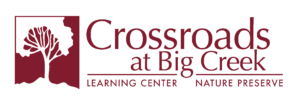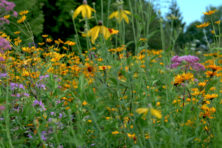Wild Ones: Planning for Pollinators
- Share
- Tweet
- Pin
- Share
Tips for an attractive garden
The trees are leafing out; the soil is getting warmer; and folks are beginning to think about adding annuals and perennials to their gardens and landscapes. Conveniently, suppliers from garden centers to farm-market stalls will soon have a plethora of flowers available.
Many people are just going for pretty yards, but more and more Door County residents are making a sincere effort to create small, but significant wildlife habitats on their properties – and the flower choices they make will influence the birds and insect pollinators they attract.
Naturally, members of Wild Ones of the Door Peninsula always recommend planting native trees, shrubs and flowers because they serve as host plants to butterflies and moths. These insects are extremely picky, laying their eggs on a specific species of plant. Those eggs grow into caterpillars, and apparently caterpillars are just about the only food birds feed their nestlings, so people who want to encourage songbirds to nest in their yards would do well to plant only native species.
But – full disclosure – adult butterflies and moths, and many (but not all) species of bees will sip nectar and/or gather pollen from a variety of flowers, native or introduced, if they can. So if you’re trying to have a landscape full of butterflies or a garden complete with “companion flowers” to attract pollinators, you’re best off selecting flowers that are easy for beneficial insects to find and access.
First – and this may seem odd coming from someone who is constantly advocating for biodiversity – if you want pollinators to find your flowers, don’t plant a wide variety of single plants. Insects are far more likely to see and visit the same species in drifts or clusters. But seasonal diversity is a good thing, so when planting clusters of similar flowers, try growing a variety so that at any given time – from early spring to late fall – something will always be blooming in your yard.
Many insects, including honey bees, cannot see the color red, but they do see yellow and purple. They can also see a color beyond our visible spectrum: ultraviolet. In many cases, researchers using film that’s sensitive to ultraviolet light have discovered that “white” flowers often have amazing, beautiful patterns that are invisible to us, but quite attractive to pollinating insects.
In her book Bees: An Identification and Native Plant Forage Guide, Heather Holm wrote, “Besides food rewards, flowers also devised a number of ways to attract bees [and butterflies] with visual, olfactory and sensory cues. These cues include nectar guides, flower color, shape, pattern, flower fragrance and floral electric fields.”
Holm recommends selecting symmetrical, flat flowers with simple outlines or those with a “landing pad” such as a bottom lip or petal on each blossom.
Also – and I know they are gorgeous – avoid “double-bloom” hybrids because pollinators do not recognize them. Even if they do, the insects have trouble finding the nectar – if the hybrids even have nectar. Often they don’t. But the so-called landing pad – the flat part of a flower – is very important because most insects cannot hover.
Hummingbirds, which also are pollinators, can hover, and not only can they see red, but they are attracted to it. So if you’re trying to attract hummingbirds, then red, trumpet-shaped flowers will be your best choice.
I suppose it’s obvious that insecticides should never be used on flowers, but far too often people inadvertently poison pollinators when they purchase plants that have been treated with neonicotinoids or other systemic pesticides in the nurseries where they were grown. When you purchase flowers, make certain that the plants you purchase are pesticide-free.
Karen Newbern, secretary of Wild Ones of the Door Peninsula and the nursery manager of Door Landscapes, recently presented a delightful virtual lecture, “Creating a Butterfly Garden,” through the Egg Harbor Library. Great information, species suggestions and gorgeous images made it well worth watching. The lecture was recorded and can be accessed at the Egg Harbor Library website.
Any flowers will make a landscape more attractive, but flowers selected to benefit pollinators also help the environment.



